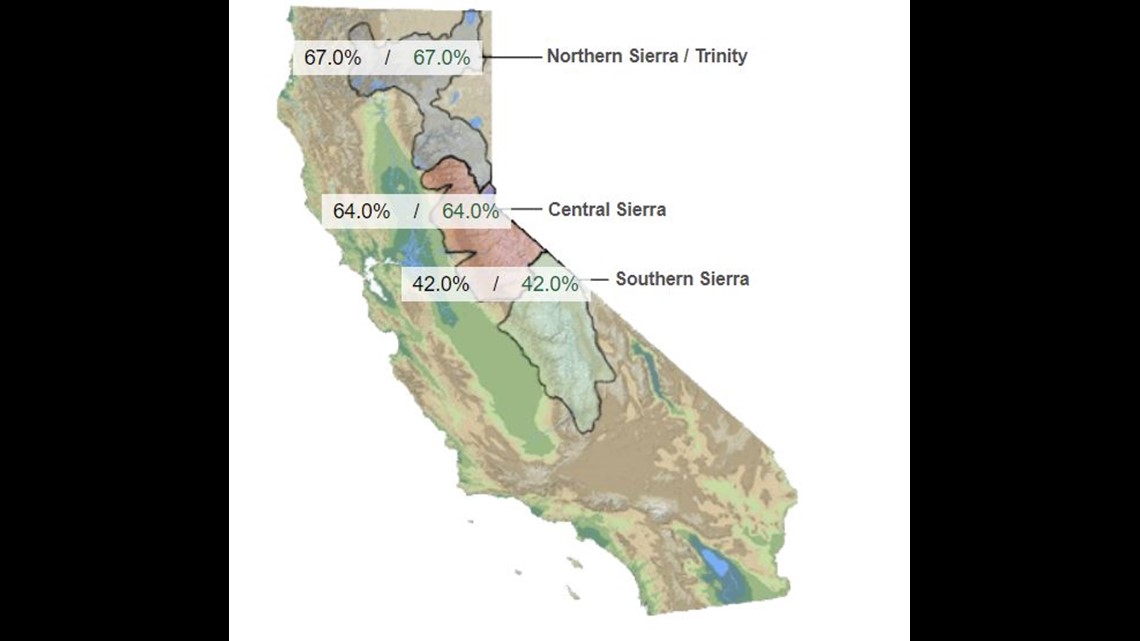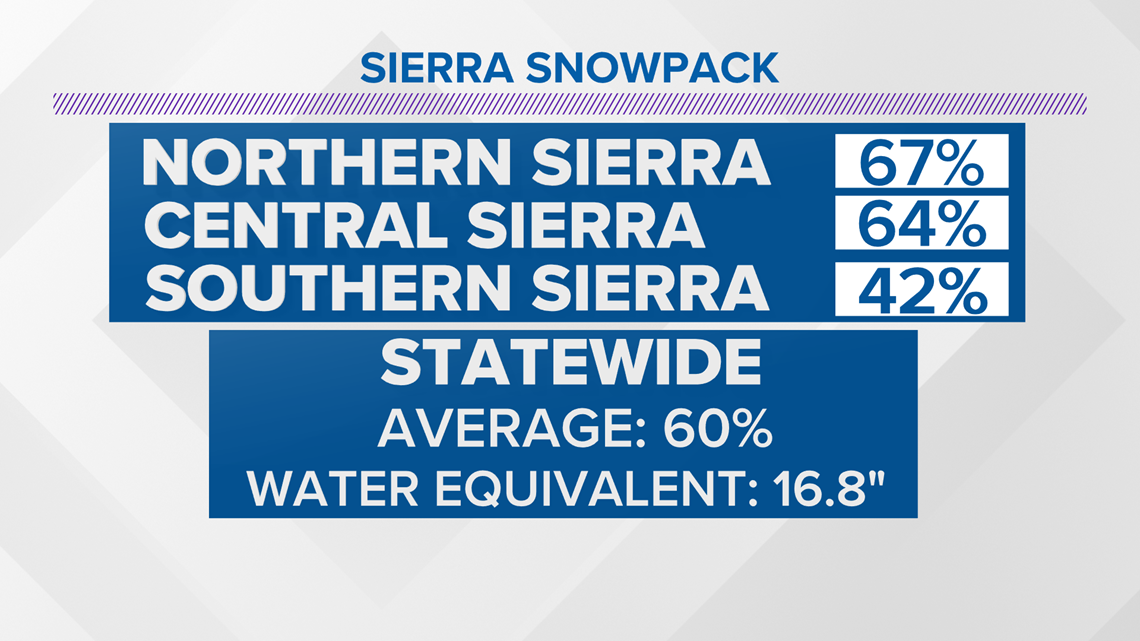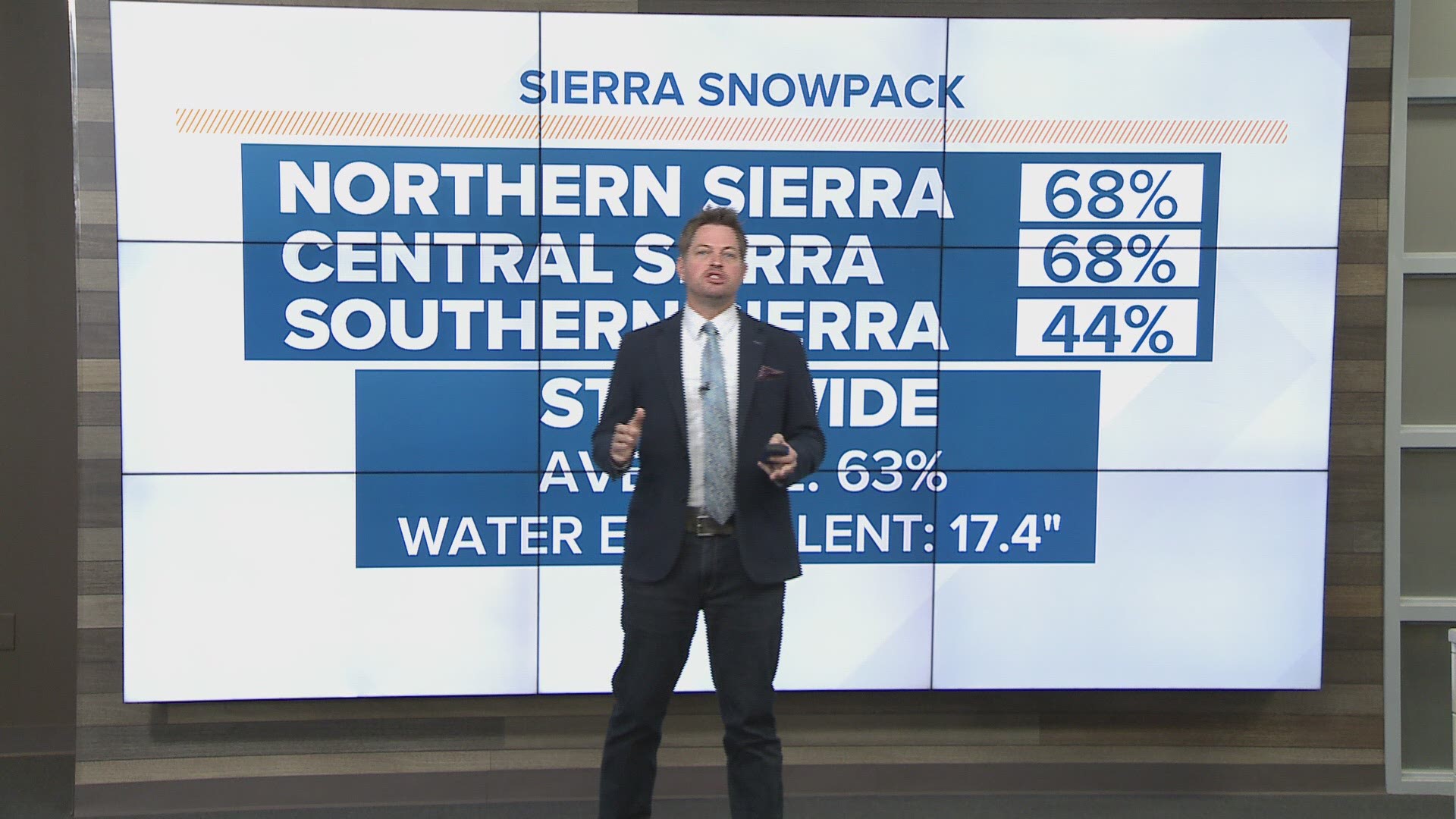SACRAMENTO, Calif. — Is California ready for the next drought? | ABC10 Originals
On the heels of a new snow survey for March, current snowpack totals are leaving many projecting a rough year for water resources.
The Department of Water Resources projected 10% water allocation and recently dropped that to 5% after water storage numbers showed less promise.


Snowpack totals as of the end of March show the Northern Sierra with 67% of normal snowpack, the most promising of the other Sierra regions but still well below average from where the snowpack should be this time of year. The Central Sierra received 64% of normal and a water equivalent of about 19.2 inches. The southern Sierra faired the worst with 42% of normal and only a snow water equivalent of 10.6 inches of water.


State Water Project and Central Valley Project Drought Contingency Plan for March through September has been modified based on the mid-March readings on the snowpack.
2020 was an exceptionally dry year and now 2021 doesn’t seem to show improvement. The Northern Sierra water year was the 9th driest on record and now this water year hasn’t come nearly to an end and is already ranked the tenth driest on record.


The conservation project states that water storage is a top priority and that flood gates are not likely to open in April for the Delta Cross Chanel.
Upstream Reservoir storage showed well below average numbers through the end of February. Lake Shasta’s storage recorded 2.27 million acre-feet or 50% of capacity and 68% of the historical average. Folsom Lake reached 346 thousand acre-feet or 35% of capacity and 64% of the historical average.
The water flows into Sacramento and the San Joaquin Valley seemed to fairly a bit better, but still will require conservation efforts. Trinity Reservoir which supports the flow of the Sacramento River had 1.27 million acre-feet or 52% of capacity or 82% of the historical average. The New Melones Reservoir recorded about 1.55 million acre-feet or 65% of capacity and 106% of the historical average. The State Water Project and Central Valley Project notes the San Joaquin watershed numbers are still lower than they were last year at this time.
The lack of rainfall and warmer temperatures is a major concern for fire season beginning sooner. Just this week, Governor Newsom announced a plan to hire more firefighters this year.
The La Nina season is often to blame for the lack of rain. It's usually known to keep storm systems further north through the Pacific Northwest and Canada. Although, not every year seems to be the same when it comes to predicting El Nino Southern Oscillation years or ENSO.
A few atmospheric rivers in November and December looked promising but just didn't seem to carry through into 2021.



















